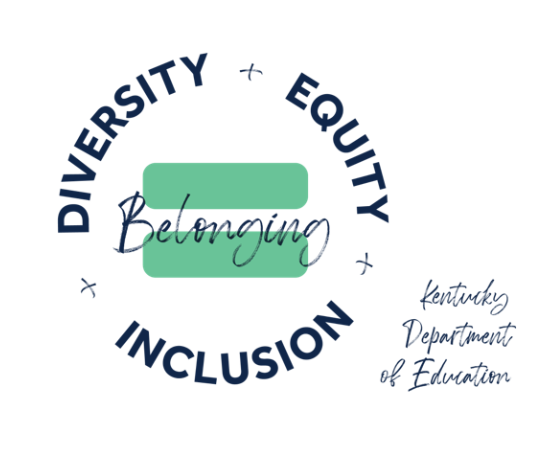
This page contains diversity, equity, inclusion and belonging resources for students and families.
Navigating the Page:
A quick way to search this page is to click the “ctrl” key and “f” key on your keyboard at the same time. Then in the box that opens in the top right corner of your screen, type in the key terms you are searching for and it will complete a search and tell you the number of times your key terms are on the page and will highlight the key terms throughout the page. If you have a Mac you will follow the same steps but instead click the “command” key and the “f” key at the same time to scan for the key terms you are looking for. Search for how to use the "ctrl f" feature to search quickly on youtube to see a video of this process.
Resources are organized by:
- Equity and Academic Resources
- Family Resources
- Wellbeing Resources
- Addressing Harassment / Discrimination / Bullying Resources
- Using Data for Equity
- Understanding Policy & Law
- Important Terms and Definitions
Equity and Academic Resources:
Family Resources:
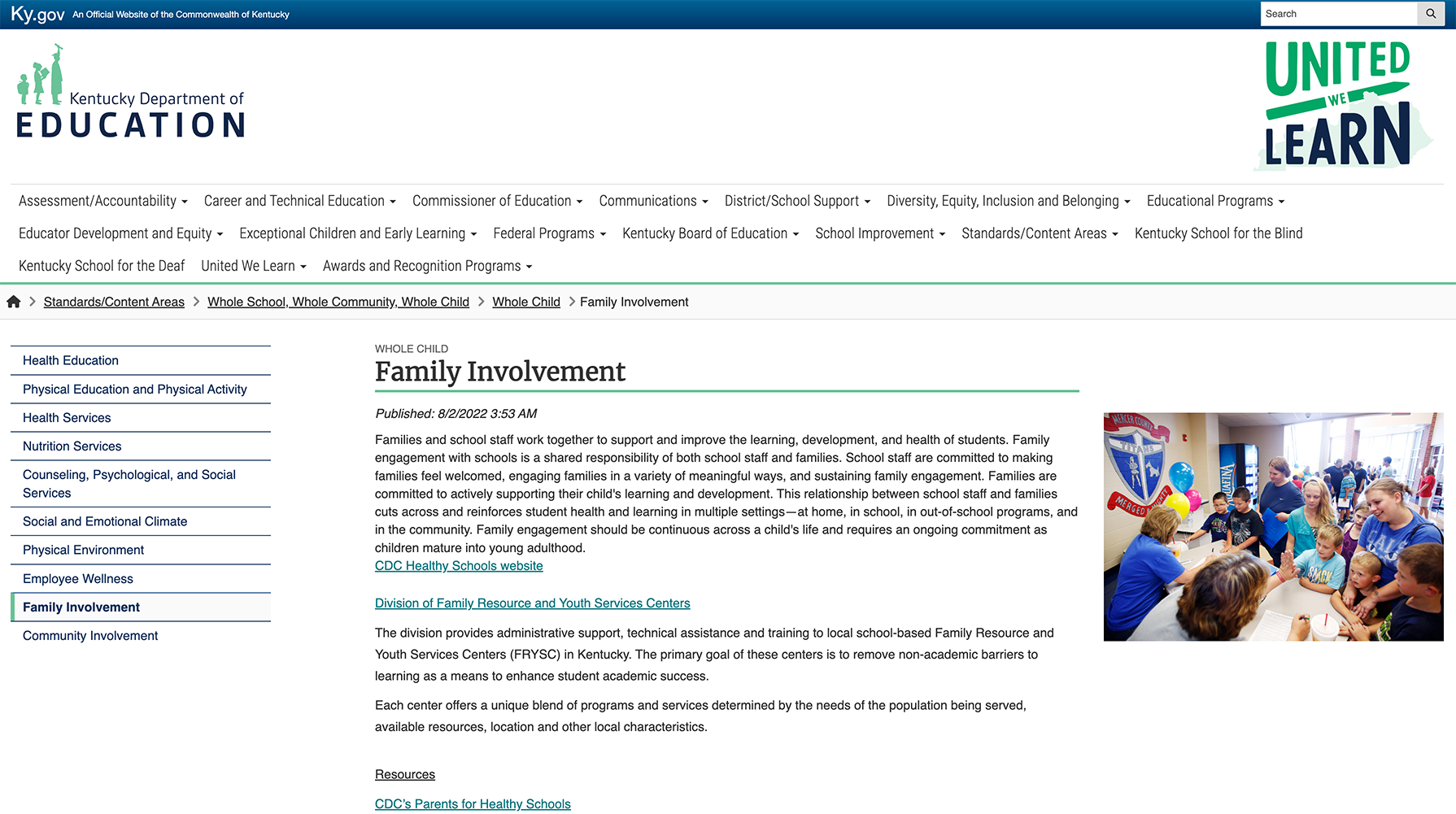
| Family Involvement
| –Visit this page to learn about the Division of Family Resource and Youth Services Centers as well as find resources such as links to CDC’s Parents for Healthy Schools.
|
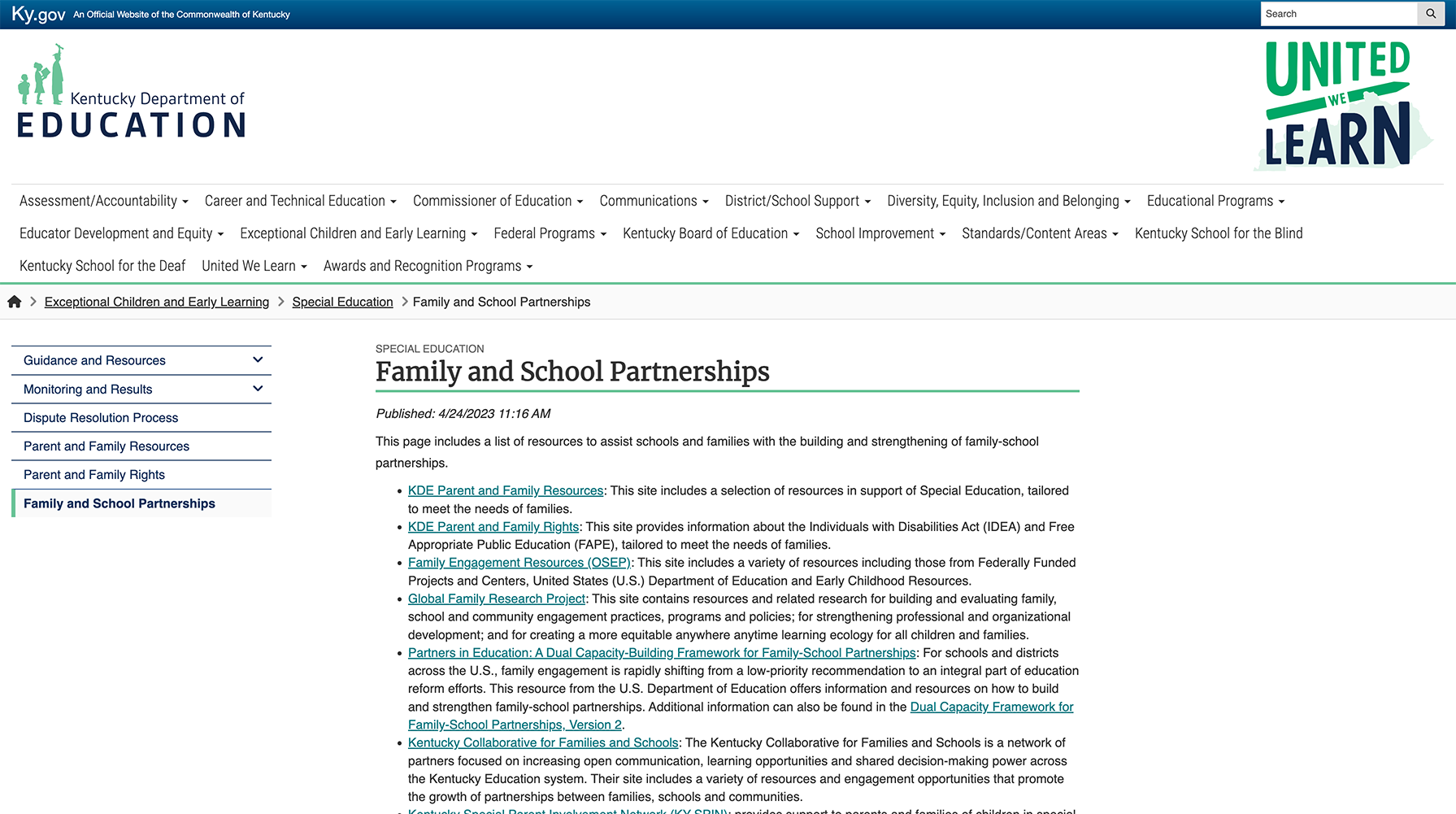
| Family and School Partnerships
| –This page includes resources on these topics:- Parent and Family Resources
- Parent and Family Rights
- Family Engagement
- Global Family Research Project
- Partners in Education: A Dual Capacity-Building Framework for Family-School Partnerships
- Kentucky Collaborative for Families and Schools
- Kentucky Special Parent Involvement Network (KY-SPIN)
- National Association of Family, School and Community Engagement (NAFSCE)
|
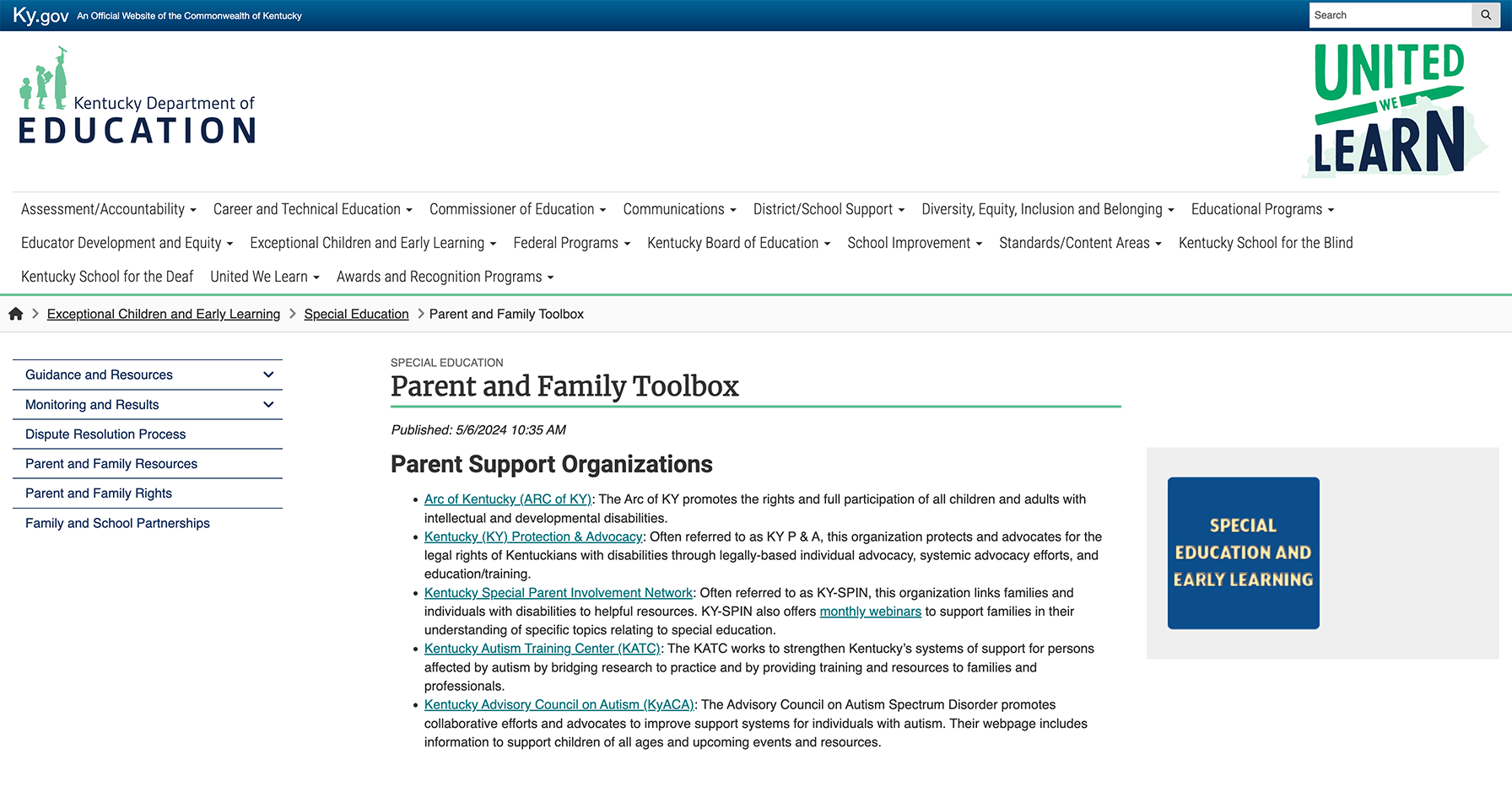
| Parent and Family Toolbox
| –This page includes resources on these topics:- Advocacy and Support Organizations
- Family Engagement
- Disabilities and Special Education
- Standards, Assessment and Accountability Resources for Guardians
- Additional Alternate Assessment
- Non-Traditional (NTI) and Distance Learning
- Student Records
- Transition and Employment
- Mental Health
- School Safety
- Contacts
–This page is owned by the Office of Special Education and Early Learning (OSEEL). |
Wellbeing Resources:
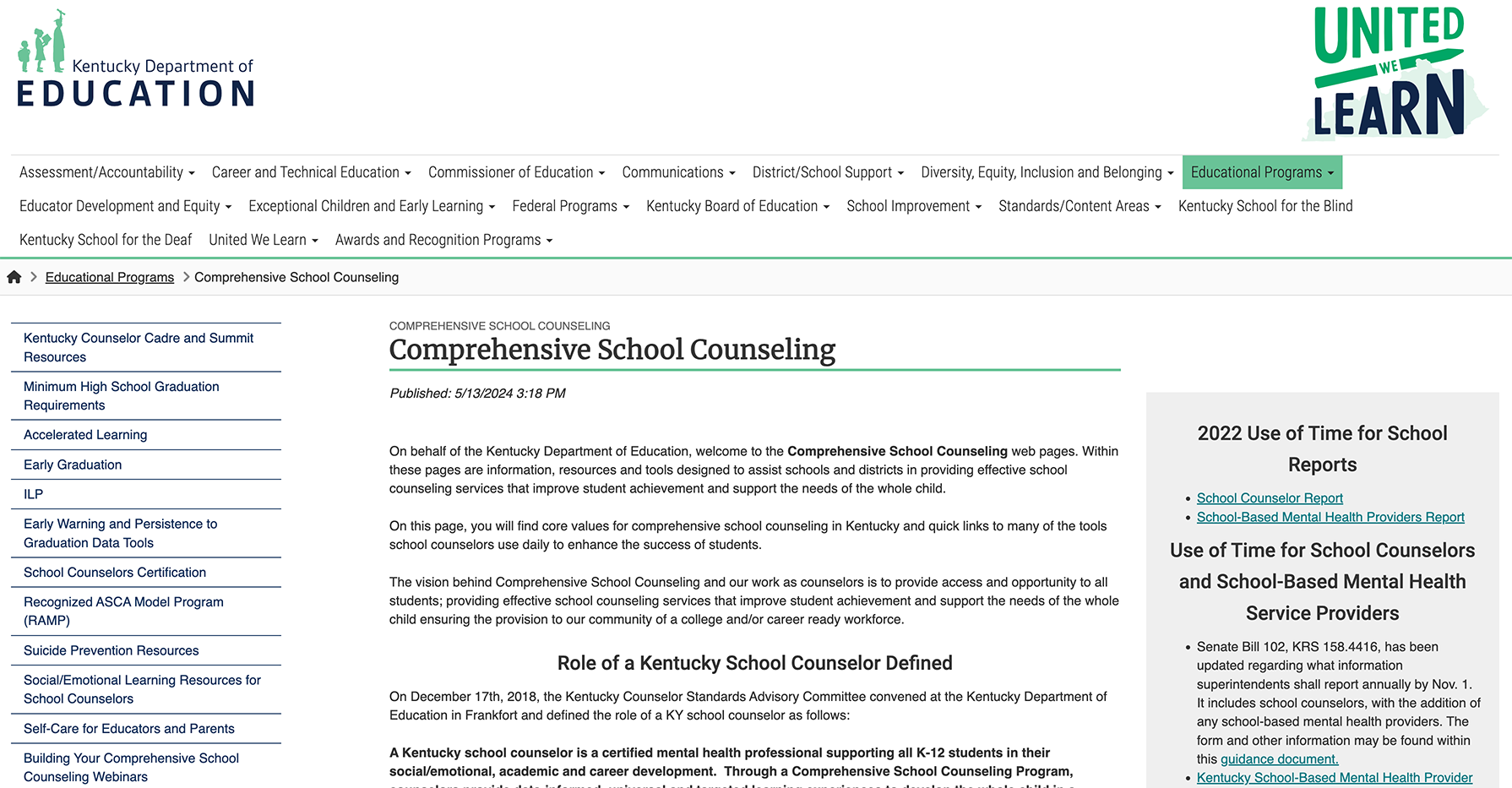
| Comprehensive School Counseling Page
| –This page explains comprehensive school counseling and provides resources including: - Role of a Kentucky School Counselor Defined
- Kentucky Framework of Best Practices for School Counselors
- Kentucky Multi-Tiered System of Supports for School Counselors
- 3 Domains of School Counseling
–This page is owned by the Office of Teaching and Learning. |
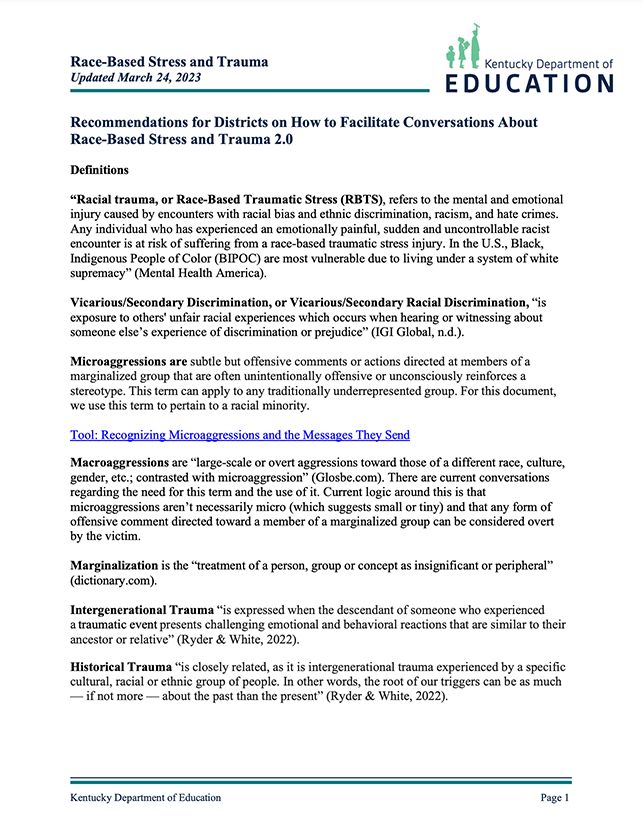
| Addressing Race-Based Stress and Trauma
| –This five-page document defines the following terms and discusses their impact on students and staff:- racial trauma
- vicarious/secondary discrimination
- microaggressions
- macroaggressions
- marginalization
- intergenerational trauma
- historical trauma
–Research shows that ignoring or avoiding race-related topics may increase harm while discussing these topics can reduce harm for all students (Gonzales, D, et al., 2022).
–This document was created by the Office of Teaching and Learning Division of Diversity, Equity, Inclusion and Belonging. |
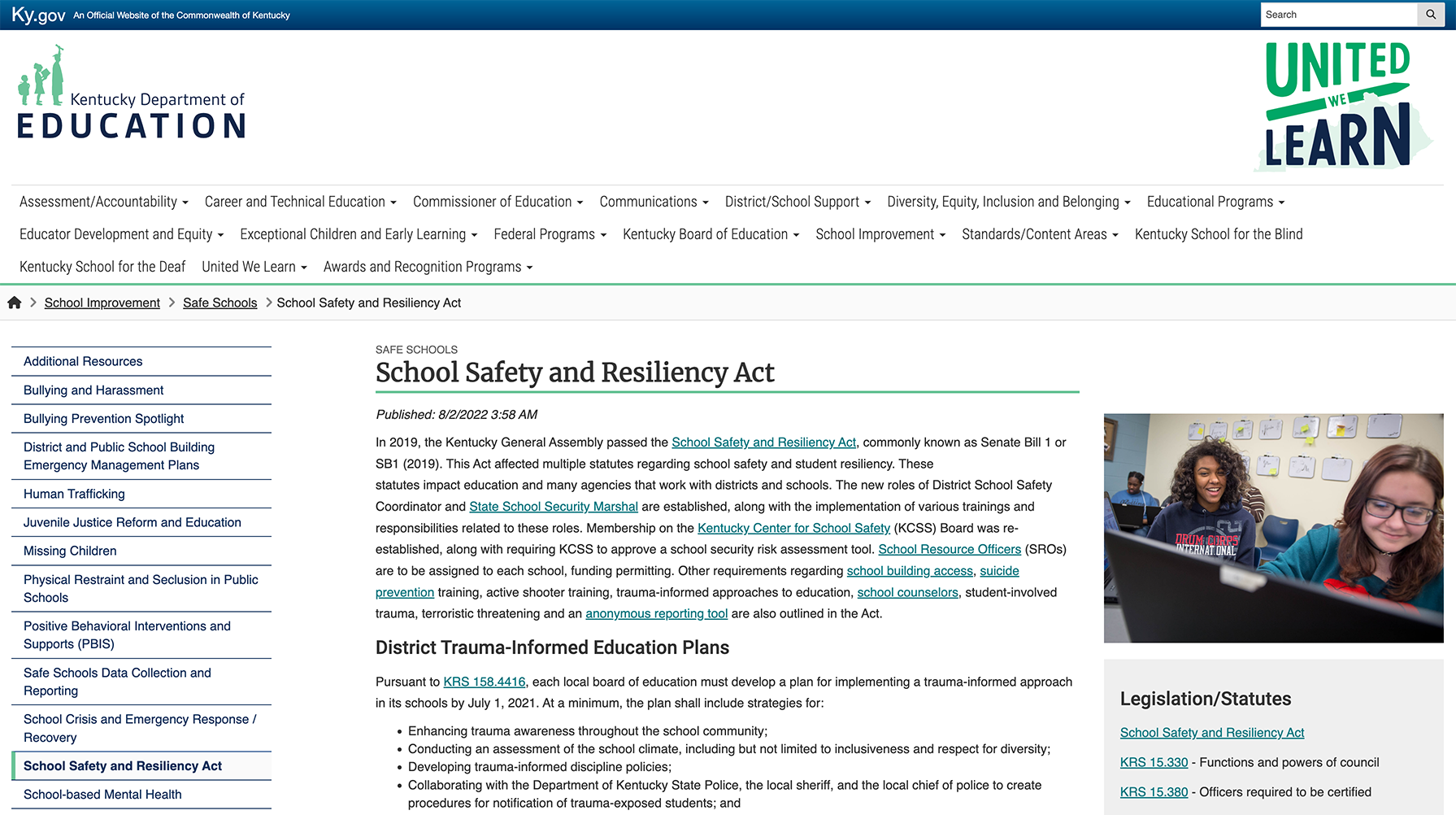
| Trauma-Informed Toolkit
| –Resources in the Trauma-Informed Toolkit include:- Understanding Trauma and Traumatic Stress
- What Is a Trauma-Informed School?
- Trauma-Informed Teams
- Trauma-Informed Active Shooter Drills
- Handle with Care
- Trauma-Informed Lockdown Drills
- Trauma-Informed Discipline Response and Behavior System
–This page is owned by the Office of Continuous Improvement and Support Division of Student Success. |
Addressing Harassment / Discrimination / Bullying Resources:
Using Data for Equity Resources:

| The Kentucky Department of Education's Equity Dashboard (Data)
| –The equity dashboard provides live, inward facing data on the under- or over-representation of various demographic groups on several indicators: - special education
- chronic absenteeism
- in-school suspension
- out-of-school suspension
- gifted and talented
- advanced coursework/dual credit
- CTE coursework
- CTE completers
- and benchmarks
–The dashboard is designed to offer a “big picture” look to help schools and districts identify areas needing further attention.
–Reach out to your school leader to request data and find out who has access to the dashboard in Infinite Campus at your school or district.
–The Equity Dashboard was created by The Office of Teaching and Learning Kentucky Multi-Tiered Systems of Support (KyMTSS) Coordinator and the Division of Diversity, Equity, Inclusion and Belonging. |
Important Terms and Definitions:
Equity: The promotion of access, opportunity and advancement of all individuals, including those in underserved communities, in order to identify and eliminate conditions that prevent the ability of all students to reach their full potential. See our homepage for a definition of underserved communities.
Culturally Sustaining/Responsive Practices: Culturally sustaining/responsive practices utilize High-Quality Instructional Resources and asset-based mindsets to create an inclusive environment where each student, particularly those from underserved communities, feels a sense of belonging and are held to high expectations with Kentucky Academic Standards and grade-level appropriate content. These practices create vibrant learning experiences that provide student choice and voice, are student-led, meaningful to students and allow students to demonstrate their learning in a variety of ways. They also reflect students’ cultural identities throughout the curriculum. Finally, these practices celebrate and leverage students’ cultures and identities and provide opportunities to broaden perspectives by learning about other cultures.
Asset-based language: Language that affirms a positive and growth-mindset about students in which the individual focuses on strengths and views students as capable of the essential skills and attributes associated with academic success, motivation, self-efficacy and individual effort. For example, students who are learning to speak English might be called “multilingual learners” to focus on their strength in learning to know more than one language rather than saying “English language learners” which focuses on an area students need to learn and improve upon (Fitchburg State University, Policy Review With An Equity Lens).
Culture: Each individual has their own cultural norms informed by their family, communities and lived experiences. There are three levels of culture (Hammond, Jackson, & Corwin, 2015).
- Observable elements, such as food, music, dress and holidays, have a lower emotional charge.
- Unspoken rules and social norms, such as, nonverbal communication, eye contact, personal space, have a strong emotional charge.
- Worldview (such as core beliefs and group values), cultural archetypes (such as collective vs. individual) and mental models (such as funds of knowledge) have an intense emotional charge
Thomas S. Tucker, Ph.D.
Office of Teaching and Learning
300 Sower Blvd., 5th Floor
Frankfort, KY 40601
502-564-2106 Ext. 4840